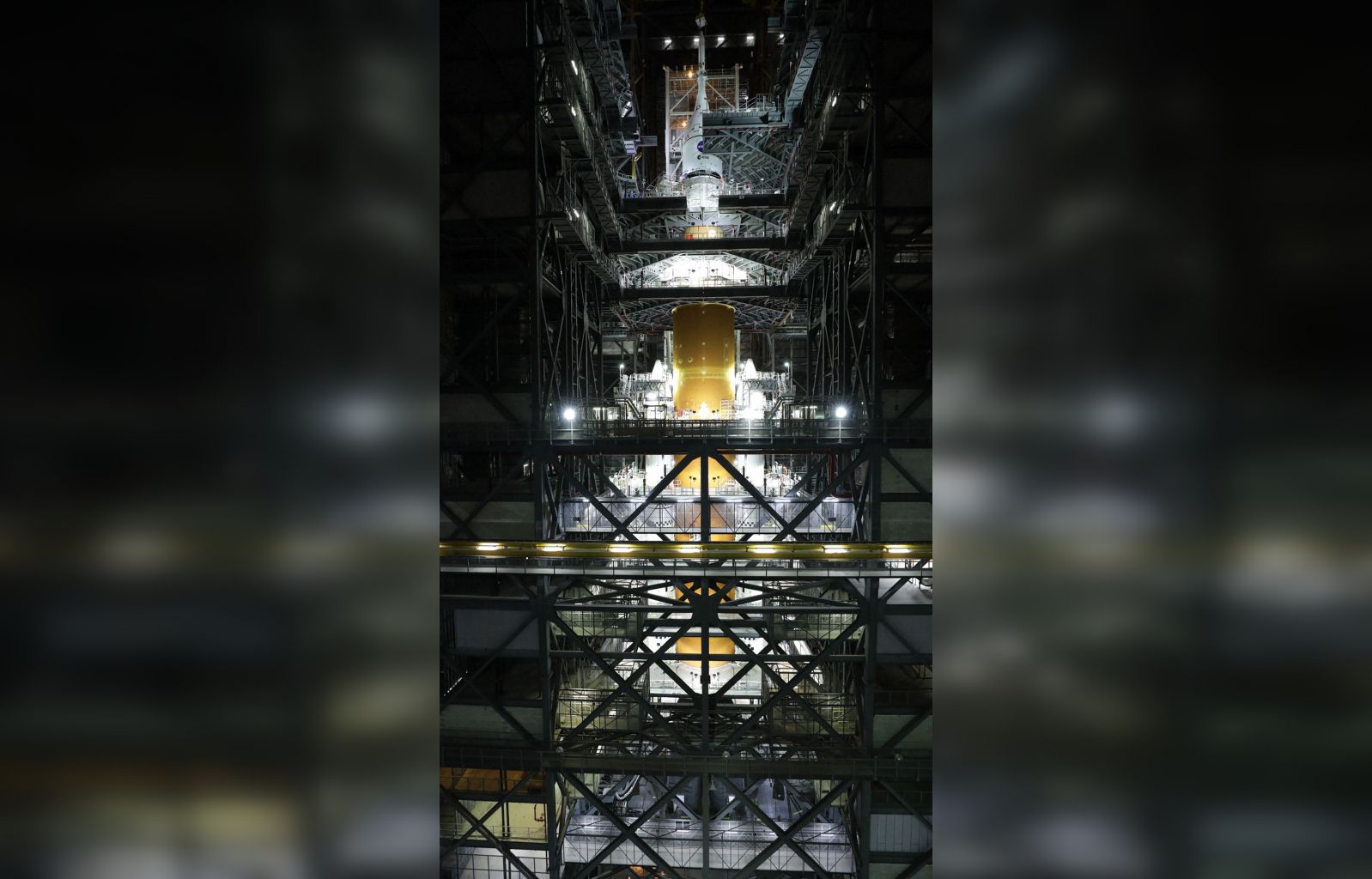Nasa plans February moon launch with giant SLS rocket
Sign up now: Get ST's newsletters delivered to your inbox

A photo released by Nasa on Oct 22, 2021, shows the Orion spacecraft placed atop the Space Launch System rocket.
PHOTO: AFP
Follow topic:
NEW YORK (NYTIMES) - Nasa on Friday (Oct 22) set dates for its giant rocket to launch a spacecraft to the moon and back, beginning in mid-February. No, for real this time.
In a news conference, officials from the space agency announced a two-week period beginning Feb 12 for a flight - without astronauts - of the Space Launch System, or SLS, the biggest rocket flown by the agency in decades. It will loft Orion, a capsule for transporting astronauts to deep space, on an uncrewed trip that orbits the moon then returns to Earth.
Whether Nasa will proceed with this February timeline depends on the results of testing on the ground leading up to the launch window, including a January dress rehearsal of the launch.
The officials also announced more two-week flight periods in March and in April, without astronauts, which are based on the moon's alignment with Earth.
The long-delayed flight, called Artemis-1, is aimed at testing the safety of the vehicle. A future flight, Artemis-2, will carry a crew on a similar voyage, which will echo 1968's Apollo 8 mission.
Nasa hopes to be able to carry astronauts back to the lunar surface, including the first woman and first person of colour, in the coming years.
No humans have visited the moon since the Apollo 17 mission in 1972.
To send people back to the moon, Nasa needs a rocket approaching the power of the Saturn V that carried the Apollo astronauts. In 2011, the Obama administration announced the beginning of the SLS, a rocket based on designs from Constellation, an earlier scrapped programme.
But little has gone according to plan with SLS. Nasa scheduled its first flight for 2017. It failed to meet that goal, and a 2018 audit faulted poor performance by Boeing for much of the missed deadlines. Covid-19 added to delays.
In January, the rocket was ready for its first big test, a sustained firing of the engines. The test was supposed to last for eight minutes but was cut off after only about a minute.
During the second attempt in March, the rocket recorded a sustained 499.6-second burn of the giant engines that sent a giant cloud of steam over the massive test stand in Mississippi.
Once the test was deemed a success, the agency shipped the rocket to the Kennedy Space Centre in Florida to begin preparations for flight.

